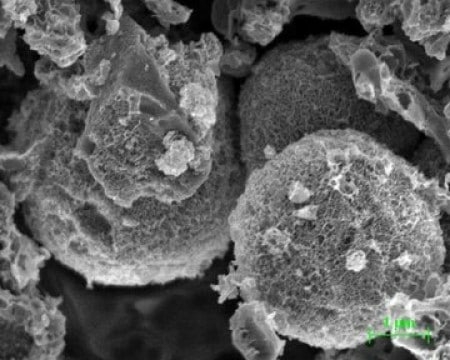source: bioenergy news
Researchers in China have developed a new process to turn fallen leaves into a capacitor which could be used to store energy in electronic devices.
Deciduous phoenix trees lining the roadside of Northern China produce a blanket of fallen leaves every autumn. Generally, these leaves are burnt as the temperatures drop, contributing to China’s air pollution problem. Now, researchers from Shandong have discovered a method to convert this organic biomass into a porous carbon material that can be used in high tech electronics.
The ‘simple’, multistep process sees the dried leaves ground into a powder and heated to 220 degrees Celsius for 12 hours. This results in a powder consisting of tiny carbon microspheres which are then treated with a solution of potassium hydroxide and heated by increasing the temperature in a series of ‘jumps’ from 450 to 800 degrees.
During the chemical treatment the surfaces of the carbon microspheres are corroded, making them extremely porous. The final product, a black carbon powder, has a very high surface area due to the presence of many tiny pores that have been chemically etched on the surface of the microspheres. The high surface area gives the final product its extraordinary electrical properties.
Supercapacitor potential
Led by Hongfang Ma of Qilu University of Technology, the researchers then ran a series of standard electrochemical tests on the porous microspheres to determine their potential for use in electronic devices. The current-voltage curves for these materials indicate that the substance would make an ‘excellent’ capacitor. In fact, their specific capacitances of 367 Farads/gram are over three times higher than values seen in some graphene capacitors, putting the material in the range of a supercapacitor.
Capacitors are widely used electrical components that store energy by holding a charge on two conductors, separated by an insulator. Supercapacitors generally store 10 – 100 times as much energy as typical capacitors, meaning they can charge faster than typical rechargeable batteries. For this reason they are seen to hold great promise for the development of computers and hybrid electric vehicles.
Hongfang Ma’s team’s research also saw them successfully convert other biowastes, such as potato waste, corn straw, pine wood and rice straw, into carbon electrodes. Overall, the supercapacitive properties of the porous carbon microspheres made from phoenix tree leaves are higher than those reported for carbon powders derived from other biowaste materials.
featured image: Scanning Electron Microscopy (SEM) image of porous carbon microspheres. Credit: Hongfang Ma, Qilu University of Technology































